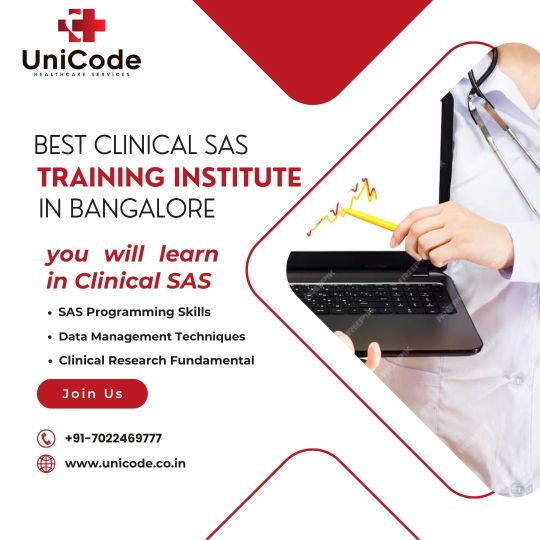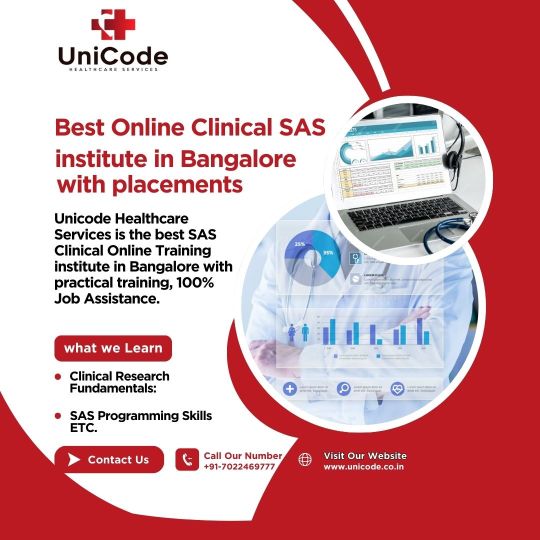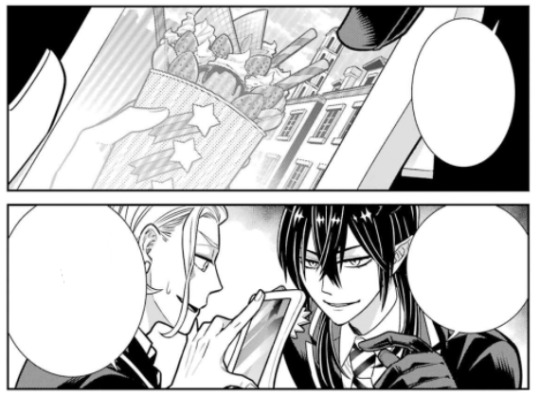#advanced typing techniques
Explore tagged Tumblr posts
Text
#advanced typing techniques#advanced keyboard typing#advanced typing test#advanced typing course#advanced typing tutorial#advanced english typing skills#advanced typing speed#advanced typing training#advanced typing software#advanced touch typing#advanced typing lessons
0 notes
Text
Enhancing Coil Reliability with Trickle Impregnation Technique and Varnishing Machines from Omsai PS Enterprises
In the electrical manufacturing and motor repair industry, insulation is everything. Proper insulation ensures long-lasting performance, minimizes electrical losses, and reduces maintenance costs. At Omsai PS Enterprises, we offer advanced Varnishing Machines based on the Trickle Impregnation Technique – a proven method for high-quality insulation of stator windings and coils.
What Is the Trickle Impregnation Technique?
The Trickle Impregnation Technique is a modern varnishing process that involves the slow and controlled application of varnish onto rotating windings, typically under heat and vacuum. This ensures deep penetration, minimal waste, and even coating across the coil surface. It is widely used in manufacturing motors, alternators, and transformers due to its excellent electrical, mechanical, and thermal properties.
Our Expertise in Trickle Impregnation
At Omsai PS Enterprises, we specialize in the design and manufacturing of high-performance Varnishing Machines based on the Trickle Impregnation Technique in Pune and Trickle Impregnation Technique in Satara. Our machines are engineered for precision and durability, ensuring superior insulation and reduced production times.
Key Features of Our Varnishing Machines
✅ Precision varnish application with minimal spillage
✅ High thermal efficiency for better curing
✅ Customizable to suit various motor sizes and coil types
✅ Easy operation and low maintenance
✅ Suitable for low-voltage and high-voltage motor windings
Applications of Trickle Impregnation Technique
Electrical motor windings
Generator stators
Alternator coils
Transformer coils
Compact motors in automotive and appliance industries
Serving Satara, Pune, and All Across India
Our Trickle Impregnation Technique in Satara and Trickle Impregnation Technique in Pune has gained recognition for its high-quality results and cost-effective performance. With a wide customer base across Maharashtra and India, we are one of the leading manufacturers and suppliers of Varnishing Machines in Satara, Varnishing Machines in Pune, and Varnishing Machines in India.
Why Choose Omsai PS Enterprises?
🛠 Decades of industrial experience
🧪 Precision-engineered equipment
🌍 Wide distribution network across India
💡 Custom-built solutions for unique requirements
📞 Prompt support and expert guidance
#Trickle Impregnation Technique#Trickle Impregnation Technique in satara#Trickle Impregnation Technique in pune#Varnishing Machines#Varnishing Machines in Satara#Varnishing Machines in India#Varnishing Machines in Pune#Batch Type Trickle Impregnating Machine in Satara#Batch Type Trickle Impregnating Machine in India#Trickle Varnishing Machine#Trickle Impregnation Machine#Varnishing Equipment#Industrial Varnishing Machines#Trickle Varnishing System#Coil Varnishing Machine#Omsai Enterprises#AR Engineering#Advanced Varnishing Machines#Industrial Coating Solutions"
0 notes
Text




#Best Clinical SAS Training Institute in Hyderabad#Unicode Healthcare Services stands out as the top Clinical SAS training institute in Ameerpet#Hyderabad. Our comprehensive program is tailored to provide a deep understanding of Clinical SAS and its various features. The curriculum i#analytics#reporting#and graphical presentations#catering to both beginners and advanced learners.#Why Choose Unicode Healthcare Services for Clinical SAS Training?#Our team of expert instructors#with over 7 years of experience in the Pharmaceutical and Healthcare industries#ensures that students gain practical knowledge along with theoretical concepts. Using real-world examples and hands-on projects#we prepare our learners to effectively use Clinical SAS in various professional scenarios.#About Clinical SAS Training#Clinical SAS is a powerful statistical analysis system widely used in the Pharmaceutical and Healthcare industries to analyze and manage cl#and reporting.#The program includes both classroom lectures and live project work#ensuring students gain practical exposure. By completing the training#participants will be proficient in data handling#creating reports#and graphical presentations.#Course Curriculum Highlights#Our Clinical SAS course begins with the fundamentals of SAS programming#including:#Data types#variables#and expressions#Data manipulation using SAS procedures#Techniques for creating graphs and reports#Automation using SAS macros#The course also delves into advanced topics like CDISC standards
1 note
·
View note
Text
There are a lot of things that need to come together before cement testing can take place. Architects, engineers, and builders can have peace of mind knowing that the cement used in a project is by all of the relevant regulations and requirements.
#Cement Testing#Cement Quality Testing#Types of Cement Testing#Importance of Cement Testing#Cement Test#Test on Cement#Cement Testing Equipment#Advanced Cement Testing Techniques
1 note
·
View note
Text

Discover the benefits of minimally invasive gastrointestinal surgery at Healix Hospitals, offering advanced techniques for better patient outcomes.
Do Visit: https://www.healixhospitals.com/blogs/minimally-invasive-gastrointestinal-surgery:-benefits-and-procedures
#Minimally Invasive Gastrointestinal Surgery#Benefits of minimally invasive surgery#Gastrointestinal surgery procedures#Advantages of minimally invasive surgery#Types of gastrointestinal surgery#Minimally invasive surgical techniques#Recovery from gastrointestinal surgery#Laparoscopic gastrointestinal surgery#Minimally invasive GI surgery#GI surgery benefits#Advanced gastrointestinal surgical procedures#Minimally invasive surgery recovery time#Cost of minimally invasive surgery#Risks of minimally invasive surgery#Gastrointestinal health and surgery#Patient outcomes in minimally invasive surgery
1 note
·
View note
Text
Blue Cross of Louisiana doesn’t give a shit about breast cancer

I'm on a 20+ city book tour for my new novel PICKS AND SHOVELS. Catch me in PITTSBURGH on May 15 at WHITE WHALE BOOKS, and in PDX on Jun 20 at BARNES AND NOBLE. More tour dates here.

A jury has ordered Blue Cross of Louisiana to pay $421m to a hospital specializing in a much sought-after type of breast reconstruction, primarily for cancer survivors. The insurer "preapproved" surgeries for thousands of patients, but then held back 92% of the payments it owed, with CEO Steven Udvarhelyi insisting that "authorization never says we’re going to pay you":
https://www.documentcloud.org/documents/25882446-steven-udvarhelyi-deposition/#document/p1/a2630959
In a characteristically brilliant and deep investigative story, Propublica's T Christian Miller explains how Blue Cross of Louisiana colluded with other Blue Cross franchises around the country to steal hundreds of millions of dollars by denying claims they'd already approved:
https://www.propublica.org/article/blue-cross-blue-shield-louisiana-insurance-lawsuit-breast-cancer-doctors
The hospital at the center of this controversy is the Center for Restorative Breast Surgery in New Orleans, founded by two surgeons, Frank DellaCroce and Scott Sullivan. DellaCroce and Sullivan are pioneers of an advanced form of breast reconstruction called "autologous tissue reconstruction," which eschews implants in favor of the patient's own fat to construct new breasts. While other surgeons perform this surgery, DellaCroce and Sullivan are acknowledged as national leaders, having invented many innovative techniques and trained many of the other surgeons who perform the procedure. As a result, patients travel from all over America to the Center for Restorative Breast Surgery.
DellaCroce and Sullivan's procedure is extremely precise and labor-intensive, and it comes at a high cost. Accordingly, patients seek pre-approval from their insurer before undergoing the procedure, and in Louisiana, that usually means calling up Blue Cross, the state's largest insurer. Despite pre-approving the procedure, Blue Cross of Louisiana has held back over 90% of the payments it owed to the hospital.
Rather than throwing their patients into the Blue Cross meat-grinder, DellaCroce and Sullivan carried the unpaid balance on its books, repeatedly suing Blue Cross for the unpaid amount. Finally, last week, the a jury ordered Blue Cross to pay $421m to the hospital (Blue Cross is appealing).
The case dragged Blue Cross's sleazy behavior – normally confined to bureaucratic memos and telephone denials – into the public, and boy is it ugly. Blue Cross's official excuse for denying the claims was that it was acting in the best interest of the millions of Louisianans it insures: DellaCroce and Sullivan are simply too expensive – it's not realistic for people in an insurance pool to expect that kind of care. However, Blue Cross executives repeatedly signed one-off, "single case agreements" so that their own wives could get the procedure from DellaCroce and Sullivan.
In addition to this argument, Blue Cross insisted that the fact that it had pre-approved all of these procedures did not oblige it to pay for them after the fact. Rather, an "approval" is a bureaucratic, heavily disclaimed term of art that means, maybe we'll pay for this and maybe we won't. In court, however, the company was forced to admit that an "approved" procedure has to be paid for in all but the most exceptional instances, for example, when the patient cancels their insurance between getting approved and going in for surgery.
The insurer also claimed that there were checks and balances to prevent arbitrary claims denials, but then Blue Cross executive VP Paula Shepherd acknowledged that "an appeal is not available to review an underpayment." As Miller writes, "The insurer simply issued an edict — the payment was correct."
Meanwhile, Blue Cross didn't just save money by denying the claims it had approved – it made money. Other Blue Cross organizations in different states would pay 16% kickbacks to the Louisiana Blue Cross, splitting the take every time it denied a payment.
All of this added up to means, motive and opportunity to engage in unbelievably sleazy – and fraudulent – behavior. Overall, Blue Cross paid $43m on $500m worth of invoices from the hospital. In 60% of claims, it paid nothing.
Blue Cross is one of the nation's largest health insurers, and Blue Cross's argument for stiffing this hospital is the argument for letting insurers buy one another up and grow to unimaginable scale. In David Dayen's amazing 2020 book Monopolized, he lays out the procession of America's morbid health care monopolization:
https://pluralistic.net/2021/01/29/fractal-bullshit/#dayenu
First, we allowed pharma companies to merge to monopoly, which gave them the power to screw hospitals with sky-high drug prices. So the hospitals defensively merged into regional monopolies with the power to negotiate those prices down, but this also gave them the power to overbill insurers. So the insurers also merged until they could resist the hospital chains' pricing power and force rates down.
And indeed, 97% of doctors and hospitals have a negotiated rate with Blue Cross of Louisiana (remember, it's the state's largest insurer). But DellaCroce and Sullivan haven't joined the Blue Cross network, because the rates the insurer offered wouldn't even cover the costs of the surgeries.
The theory that monopolies will defend us from other monopolies is a disastrous example of "the old lady who swallowed a fly" strategy. For the strategy to work, everyone has to be a monopolist, otherwise they'll get steamrollered – on their wages, their care, or their compensation.
And of course, patients don't get to merge to monopoly (that's what governments are for, and we know how Blue Cross feels about single payer care). Workers don't get to merge to monopoly either (that's what unions are for, and no one hates a union more than a health care monopolist).
Blue Cross's position – the position of the entire for-profit health industry – is that they should be able to grow as large as they can, at the expense of us, the patients. In other words, they are economic tumors – so no wonder they're on the side of breast cancer.

If you'd like an essay-formatted version of this post to read or share, here's a link to it on pluralistic.net, my surveillance-free, ad-free, tracker-free blog:
https://pluralistic.net/2025/04/12/pre-authorization/#is-not-a-guarantee-of-payment
#pluralistic#propublica#m4a#medicare for all#health insurance#luigi mangione#blue shield#blue cross#blue cross blue shield#blue shield of louisiana#blue cross of louisiana#blue cross blue shield of louisiana#cancer#fuck cancer#breast cancer#Center for Restorative Breast Surgery#nola#new orleans#Frank DellaCroce#Scott Sullivan#monopoly#trustbusting#Steven Udvarhelyi#autologous tissue reconstruction#Paula Shepherd#Becky Juncker#Kim Boyle
1K notes
·
View notes
Text

Elevate your skills with professional nail art courses at Orane Hyderabad. Learn the art of beautiful nails and unleash your creativity. Enroll now!
Do Read: https://www.oranehyderabad.in/professional-nail-art-courses/
#3D Nail Art#Advanced Nail Art Concepts#Choosing the Right Nail Art Course#Different Types of Nail Art#Evolution of Nail Art Designs#Freelance Nail Artist#History of Nail Art#Knowledge of Nail Anatomy#Nail Art Techniques#Nail Painting and Polishing#Professional Nail Art#Professional Nail Art Certification#Professional Nail Art Courses#Proficiency in Various Nail Art Techniques#Special Effects Nail Art#The importance of Nail Art#The rise of Nail Art Courses
1 note
·
View note
Text
Some mathematicians claim they can visualize R^4, or even higher-dimensional spaces. I think this is probably possible for the human mind to do, in principle; the human mind often proves surprisingly flexible. But I think it probably takes a lot of concerted practice, and because you are stretching your mind beyond its intended limits in a purely-internal, imaginative way with no external reference points to check against, I think it probably has some things in common with certain types of meditative practice.
It's also common to hear mathematicians say that if humans had visual intuition for dimensions higher than 3, higher-dimensional geometry may have advanced much farther, since visual intuition is so often crucial in thinking of proofs.
So, ok, I suspect that AI will obviate the utility of this before it could ever have the chance to get off the ground, but this all makes me imagine a world where techniques for learning to visualize higher dimensions are well-known and practiced, and have become a functional necessity for being a working geometer in higher-than-3-dimensions. And these techniques require a lot of persistent practice and training, which (by the nature of the thing) is hard to precisely communicate to students. So part of becoming a geometer involves training in what is basically a meditative practice, where, à la Zen, much of the process involves not directly teaching the student but giving them prompts and mental exercises that are meant to trigger internal, incommunicable revelation. But instead of enlightenment it's geometric intuition. And so if we're getting a math PhD in, say, differential equations or something, it's mostly like it is today. But if your PhD is in low-dimensional topology there's like a whole monastic apprenticeship style thing that just comes along with it. People sometimes drive themselves insane. People sometimes drive themselves insane.
744 notes
·
View notes
Text
Uranus in the Signs
paid readings | Masterlist
ᡣ𐭩 Please support me by reposting, liking, following me and commenting your placement. Uranus is the planet which rules over innovation and social reform, it can represent where in life you break the rules and reform. Note that since it's the outerplanet it's slow moving and the interpretation for all the signs is mainly because of degree theory.


0º is the degree which doesn't have a coresponding sign assigned to it. It's a fresh new degree and will amplify the themes of the sign that it's in
Aries (1,13,25º) The natives who has Uranus in Aries are driven to take the initiative and act on their own initiative. They are often the first to embrace radical change, eager to defy expectations and forge their own path. This placement may manifest as a restless, impulsive personality that is prone to sudden shifts in focus and a desire to transform their immediate environment.
Taurus (2, 14, 26°) When Uranus is in Taurus, the native's unconventional personality frequently collides with a profound desire for stability and security. They frequently challenge traditional notions of comfort and affluence by expressing their individuality through innovative approaches to resources, money, and personal beliefs. Their material environment may alter abruptly and unexpectedly, or they may devise a unique technique of establishing their worth.
Gemini (3, 15, 27°) Uranus in Gemini is linked to restless curiosity as well as a very imaginative way of thinking and speaking. They can be at the forefront of intellectual or technological advancements, and they are usually drawn to novel concepts and distinctive forms of communication. They thrive on mental stimulation and independent thought, and they are constantly seeking out new information and relationships. Their communication style can be unexpected or surprising.
Cancer (4, 16, 28°) The urge for independence and unconventional living frequently has an impact on the native's home life, family dynamics, and emotional security when Uranus is in Cancer. They may hold extreme beliefs about family structures and rituals, or they may experience dramatic shifts in living circumstances. There is a need to overcome emotional dependence, which can result in creative ways of caring for oneself and other people, or a propensity to defy traditional roles in the home.
Leo (5, 17, 29°) When Uranus is in Leo, the native's creativity, self-expression, and leadership demonstrate their distinctiveness and desire for independence. They could be leaders, artists, or outlier performers who challenge the current quo and inspire others by their unique perspective. This positioning may also signal rapid shifts in their public persona or a rejection of authority figures in order to prominently display their individualism.
Virgo (6, 18° ) A native with Uranus in Virgo tackles work, health, and everyday routines with inventiveness and investigation. They may be at the vanguard of new scientific or technological discoveries in relevant domains, as well as inclined to novel ways to efficiency, organisation, or healing. As they attempt to upgrade and improve systems in their own unique style, there is a risk of abrupt changes in their work environment or health habits.
Libra (7, 19°) If Uranus is in Libra, the native's quest for individuality and distinctiveness has an impact on their relationships, collaborations, and sense of justice. They may be drawn to unique types of partnerships or notice abrupt shifts in their coalitions. There is a desire to challenge traditional notions of collaboration and harmony in order to change social norms and promote equality and justice in their own unique way.
Scorpio( 8, 20°) The native's desire for radical change and liberation is closely tied to their psyche, intimacy, and group resources when Uranus is in Scorpio. They might learn things about power, death, and regeneration that are shocking and transformative. A strong desire to escape control or unconscious psychological patterns may be symbolised by this placement, which could result in ground-breaking realisations and a novel strategy for personal development.
Sagittarius (9, 21°) The natives with Uranus in Sagittarius is driven by a strong desire for philosophical and intellectual independence. Seeking to widen their minds in new ways, they are typically drawn to unorthodox religious systems, other cultures, and revolutionary ideas. This placement may imply dramatic shifts in their perspective, a disregard for traditional thinking, and a strong desire to experience and grow in the realms of spirituality, travel, and higher education.
Capricorn (10, 22º) When Uranus is in Capricorn, a native's career, public persona, and sense of duty typically reflect their drive for originality and independence. They may question established hierarchies and power structures, resulting in significant shifts in their area of expertise. This placement could reflect rapid shifts in one's career or an unorthodox technique for achieving one's goals in an attempt to build new types of structure and order.
Aquarius (11, 23°) When Uranus is in Aquarius, the native's intrinsic drive for individualism and societal change becomes even stronger. Driven by a desire for a more equal and forward-thinking future, they are frequently at the forefront of technological developments, humanitarian causes, and community-building efforts. This placement indicates a strong desire for individual liberty in social settings, as well as a unique, often unconventional attitude to friendships and groups.
Pisces (12, 24°) When Uranus is in Pisces, a native's career, public presence, and feeling of duty usually express their quest for independence and freedom in spiritual or humanitarian endeavours. They may dispute established boundaries and traditional conceptions of empathy and communal well-being, dramatically altering their field of competence. This placement could signify quick changes in one's chosen route in terms of art, healing, or social issues, or an unorthodox method of reaching their aims in order to create new sorts of compassion and universal understanding.

DISCLAIMER: This post is a generalisation and may not resonate. I recommend you get a reading from an astrologer (me). If you want a reading from me check out my sales page.
@astrofaeology private services 2025 all rights reserved
333 notes
·
View notes
Text
Two Kinds of Writers

When planning novels, writers generally fall into 2 categories: “plotters” and “pantsers.”
A plotter - is someone who meticulously plans and outlines their story before they begin writing.
If you’re a painstaking outliner who spends a large amount of time in the prewriting stage charting out plotlines, devising characters, and worldbuilding, you fall into the plotter category.
Most successful writers do plotting to some extent.
If you take any bestselling published author, chances are they’d fall into the plotter category.
If you’re new to writing, trying out writing as a plotter can give you a good sense of how pre-writing can prepare you before you dive into the writing process.
If you’re the type of writer who likes to fly by the seat of your pants and write without a roadmap, chances are you would identify as a “pantser.”
A pantser - doesn’t spend a lot of time evaluating writing methods or planning out story structure, nor do they follow a paint-by-numbers approach to novel writing.
It is the preferred method for Stephen King and many other successful writers.
Pantsing can be a great way to quickly get into the writing process and beat writer’s block.
Whether you are working on your first novel or a followup to your most recent bestseller pantsing can be a great method for jumpstarting your process and getting your creative juices flowing.
How to Approach the Writing Process as a Plotter
There are many ways to approach plotting, and you will probably experiment with many different techniques over the course of your writing life. If you’re just getting started trying out writing as a plotter here are some steps to get you on your way:
Generate ideas. The first step in writing a novel is generating story ideas. Some writers like to freewrite and brainstorm, others prefer working with writing prompts. Whichever approach you take, it’s important to spend time coming up with a variety of ideas and choosing a strong premise that lends itself to an effective plot.
Start with a simple, compelling premise. Once you have a basic idea, it’s time to develop a story premise. One way to develop a small idea into a basic story is called the snowflake method. The snowflake method involves starting with a core premise or theme upon which you build every other aspect of narrative and character as you flesh out the big picture.
Trace out general story arcs. Start to lay out a storyline. You don’t have to worry about building the whole thing at once. Rather you can focus on each act within your story arc—or even simple scene descriptions—and piece these together as you build out a full-length narrative.
Don’t neglect character development. Character is an incredibly important part of a story and helps to balance out plot-based narratives. Before you start writing you should make sure that you have detailed character arcs and a main character with a clear motivation and backstory. Part of building a good character is choosing a strong and nuanced point of view. Balance out the plot portion of your writing process by taking some time to analyze your characters and make sure they are strong, realistic, and nuanced.
Build subplots. Once you have a good sense for your main plot it’s time to layer in subplots. Subplots can often be character-specific, so this is a good time to think a bit about the characters you’ve populated your world with and how each individual backstory might come into play. Good subplots will weave seamlessly through your main arc and help advance your action rather than distract from it.
Write a detailed outline. Before you start writing, you should have a detailed plot outline. This should catalog the main story and individual plot points. It should be comprehensive enough that someone who has no knowledge of your story could look at the outline and piece together the narrative of events, identifying your inciting incident, rising action, and climax. It can also be useful to write individual smaller outlines such as a chapter outline or act outline that you can piece together to create a macro story outline.
Tie up loose ends. Once you have a detailed outline, it’s time to tie up loose ends and fill any plot holes. One common misconception about writing is that editing comes at the end of the process. Editing is something you should return to throughout your writing process, and it’s important to edit your plot and outline before you start writing in earnest.
How to Approach the Writing Process as a Pantser
There are many different ways to approach pantsing. The most basic principle of pantsing is to just start writing. Pantsers fly by the seats of their pants, whether they’re writing a full-length novel or a short nonfiction piece. That being said, there are some basic steps you can follow as you launch into writing a novel as a pantser:
Start with a concept. When you approach the blank page, it’s good to have at least a vague idea of what you want to write about. Part of pantsing is allowing your impulses and feelings to guide you, but having a basic sense of what inspires you can help focus your writing.
Follow your impulses. Once you get into your project, feel free to follow impulse and get lost in your project. One of the joys of writing fiction as a pantser, whether you’re working on short stories or a full-length novel, is to immerse yourself in the work and discover where your mind takes you.
Take pauses to evaluate your work. It’s important to take stock of your work as you go. This way you won’t leave any plot holes or loose ends that you forget to tie up in the second half.
Don’t be afraid to edit. Just because you are essentially freewriting doesn’t mean that you shouldn’t edit your work. Editing and revising can help you work out of dead ends and structure your story around a cohesive arc with a clear turning point.
Come to a resolution. Part of being a successful pantser is sensing when your work is approaching its endpoint. Pay attention to how your story is progressing and find a natural place to resolve your plot and tie up loose ends.
Source ⚜ More: Notes & References ⚜ Writing Resources PDFs
#writing tips#writeblr#literature#writers on tumblr#writing reference#dark academia#spilled ink#writing prompt#creative writing#writing advice#on writing#writing inspiration#writing ideas#light academia#lit#writing resources
101 notes
·
View notes
Note
hi there! im a fan of your page 💕
can you give me the best studying techniques?
hi angel!! @mythicalmarion tysm for asking about study techniques 🤍 i'm so excited to share my secret methods that helped me maintain perfect grades while still having a dreamy lifestyle + time for self-care!! and thank you for being a fan of my blog, it means everything to me. <3
~ ♡ my non-basic study secrets that actually work ♡ ~




(don't mind the number formatting)
the neural bridging technique this is literally my favorite discovery!! instead of traditional note-taking, i create what i call "neural bridges" between different subjects. for example, when studying both literature + history, i connect historical events with the literature written during that time. i use a special notebook divided into sections where each page has two columns - one for each subject. the connections help you understand both subjects deeper + create stronger memory patterns!!
here's how i do it:
example:
left column: historical event
right column: literary connection
middle: draw connecting lines + add small insights
bottom: write how they influenced each other
the shadow expert method this changed everything for me!! i pretend i'm going to be interviewed as an expert on the topic i'm studying. i create potential interview questions + prepare detailed answers. but here's the twist - i record myself answering these questions in three different ways:
basic explanation (like i'm talking to a friend)
detailed analysis (like i'm teaching a class)
complex discussion (like i'm at a conference)
this forces you to understand the topic from multiple angles + helps you explain concepts in different ways!!
the reverse engineering study system instead of starting with the basics, i begin with the most complex example i can find and work backwards to understand the fundamentals. for example, in calculus, i start with a complicated equation + break it down into smaller parts until i reach the basic concepts.
my process looks like:
find the hardest example in the textbook
list every concept needed to understand it
create a concept map working backwards
study each component separately
rebuild the complex example step by step
the sensory anchoring technique this is seriously game-changing!! i associate different types of information with specific sensory experiences:
theoretical concepts - study while standing
factual information - sitting at my desk
problem-solving - walking slowly
memorization - gentle swaying
review - lying down
your body literally creates muscle memory associated with different types of learning!!
the metacognition mapping strategy i created this method where i track my understanding using what i call "clarity scores":
level 1: can recognize it
level 2: can explain it simply
level 3: can teach it
level 4: can apply it to new situations
level 5: can connect it to other topics
i keep a spreadsheet tracking my clarity levels for each topic + focus my study time on moving everything to level 5!!
the information architecture method instead of linear notes, i create what i call "knowledge buildings":
foundation: basic principles
first floor: key concepts
second floor: applications
top floor: advanced ideas
roof: real-world connections
each "floor" must be solid before moving up + i review from top to bottom weekly!!
the cognitive stamina training this is my absolute secret weapon!! i use a special interval system based on brain wave patterns:
32 minutes of focused study
8 minutes of active recall
16 minutes of teaching the material to my plushies
4 minutes of complete rest
the specific timing helps maintain peak mental performance + prevents study fatigue!!
the synthesis spiral evolution this method literally transformed how i retain information:
create main concept spirals
add branch spirals for subtopics
connect related concepts with colored lines
review by tracing the spiral paths
add new connections each study session
your notes evolve into a beautiful web of knowledge that grows with your understanding!!
these methods might seem different from typical study advice, but they're based on how our brains actually process + store information!! i developed these through lots of research + personal experimentation, and they've helped me maintain perfect grades while still having time for self-care, hobbies + fun!!
sending you the biggest hug + all my good study vibes!! remember that effective studying is about working with your brain, not against it <3
p.s. if you try any of these methods, please let me know how they work for you!! i love hearing about your study journeys!!
xoxo, mindy 🤍
glowettee hotline is still open, drop your dilemmas before the next advice post 💌: https://bit.ly/glowetteehotline

#study techniques#academic success#unconventional study methods#creative study tips#neural bridging#shadow expert method#reverse engineering study#sensory anchoring#effective studying#minimal study guide#glowettee#mindy#alternative learning#academic hacks#study inspiration#cognitive stamina#learning tips#study motivation#unique study strategies#self improvement#it girl energy#study tips#pink#becoming that girl#that girl#girlblogger#girl blogger#dream girl#studying#studyspo
175 notes
·
View notes
Note
hey bbg i ADORE your writing! could i please get a bsf!james w no boundaries who sees you watching some tv 🧡🖤 if yk what i mean and he helps her out if that’s ok with you? thank you sm i love you *💋*
this isn't tiktok, you can call it porn! also, reader wears glasses in this, if you don't yes you do. also she uses her phone but also its set at hogwarts please don't pick on me or ill give up
this post is 18+, minors dni.
You'd used the fact that James was leaving in mere minutes to justify your lack of self-control. He'd stayed the night in your bed, something he does quite often, and something that means you don't get alone time before bed. It's nice to cuddle up to him, he's a living space heater, but a dull ache has been growing between your thighs the longer you go without relieving yourself, and you're at your breaking point.
He's in your bathroom, warbling a tune that he's made up on the spot, the lyrics all quidditch-based. He's got the game on his mind, five minutes away from having to leave for practice, and you tuck your phone to your chest as you type in the website your fingers know by heart.
You're doing everything right. You've got headphones in, you've got the volume low, you've got the brightness down, but you'd forgot about your damned glasses. James saunters in from the bathroom, a towel around his waist and water droplets still clinging to his chest as he fishes around at the end of your bed for his discarded pants, and it doesn't matter that the phone is angled away from him, he catches it in the reflection of your glasses.
"Oh, I could do that easy," He boasts, and you pause the video to look curiously up at him.
"Hm?'
"That," He points vaguely at your phone, and your stomach twists, "That whole legs-up-by-the-ears thing. If you wanted to, I mean."
"What?" You retort indignantly, like you can't still hear the woman's cries echoing through your head.
"I could fuck you like that, darling," James explains, his voice taking on a tone bordering on amusement, "Hello? The porn you're watching?"
"I- What," You blabber, but you know you're losing even as you mash your thumb against the phone's lock button, "I am not watching porn!"
"Right, you're watching Sesame Street," James snorts. He advances on you despite your flustered protests, reaching out to tap his fingernail against the lenses of your glasses, "I saw it here, nasty girl. Talk about a big bird. Mine's bigger, though. I'll show you whenever you wanna take me up on that legs-by-the-ears technique."
You're silent for only the few seconds that it takes to muster up a response that's equal parts scolding and casually committal, but as soon as you're able to find your voice, James gets his jersey over his head and takes his leave.
"James-"
"Sorry, love, it'll have to wait," He reaches out and pats your shoulder like he hadn't just offered to put your knee up against it, "Practice is starting soon, and I can't be late, I'm the captain. But afterwards, okay? Love you," He grins down at you, cheekiness alight in his entire expression, from the flush of his cheeks to his dazzling grin, "Have fun while I'm gone, y'little perv."
#james potter x reader#james potter imagine#james potter scenario#james potter oneshot#james potter one shot#james potter one-shot#james potter headcanon#james potter headcanons#james potter hc#james potter hcs#james potter fanfiction#james potter fanfic#james potter fic#james potter blurb#james potter drabble#james potter dialogue#james potter fluff#james potter x reader fanfiction#james potter smut
2K notes
·
View notes
Text
🐉 being a ridiculously old-fashioned guy whose romantic advancements would be considered today as creepy and a 🌸 who's a very modern person. Warning: may be mildly uncomfortable.
Scenario 1
🐉, throwing rocks at their window: "Beautiful child of man! I've come to see you!"
🌸: "What the fuck?! It's 12 am!!"
CRASH!!
🌸: "YOU BROKE THE WINDOW! I'M GONNA REPORT YOU TO THE HEADMAGE FFOR DESTRUCTION OF PROPERTY--"
The headmage praises Draconia for his tenacity and dedication.
Scenario 2
🐉: "Oh dear, there's a puddle on the floor."
He shrugs off his coat, drapes it over the puddle, and with a smug face, flourishes his arms to encourage 🌸 to walk on the coat.
🌸 stares at him dead in the eyes, mouth agape as they sidestep the coat altogether.
Scenario 3
🐦⬛: "Alright, first years. Our fieldtrip location doesn't have a magic mirror installed, so we will be flying on a plane instead. Line up now~"
🐉, thundering across the airport, frightening the guards who attempted to do their job and stop this menace but backing out after a step: "BELOVED! I shall wait for you, no matter how long it takes for us to reunite! A month, a year, a decade! A century! I will be patient and my love for you will be the same as you left it, rest assured."
🌸, hiding their face and trying to hide behind the curious crowd: "Oh my god, oh my god, kill me--"
🐦⬛: "My! What an admirable profession of love! Rest assured however, that the students will only be gone for three days."
🐉: "Lovely. Then I will wait at this place for your arrival--"
🌸: "GO HOME!"
Back at the dorm
🐉: "Lilia Vanrouge! It is not working! Every single one of the romantic advancements you taught me did not work at all!"
🦇: "Really? How odd. I mean, it was your mother who did those to your father and he seemed to ignore all of her advances too, but they got married in the end, didn't they?"
🦇: "I'm sure you'll win in the end too! It's tried and tested. Just keep at it!"
Or alternatively, a 🌸 who absolutely loves his courting techniques because their type is a pathetic wet cat type of a man and his actions are the pinnacle of desperate and pathetic.
850 notes
·
View notes
Text
twst 4koma nov 2024 update~



The Episode of Savanaclaw update has been delayed to January. There's no update for the Episode of Octavinelle either! Only the 4koma this time.
***4koma spoilers under the cut!!***

This month's 4koma features Malleus and Cater as the main characters! Malleus spies a gargoyle in the background of one of Cater's Magicam pics and asks Cater to show him that gargoyle on an aerial stroll. He gets the chance to show off gargoyles' charm to Cater~

Silver is surprised that Malleus has invited Cater and mistakes Cater as a new member of Malleus's club.

Silver is surprised to see Cater riding his broom without keeping his hands on it. It's such an advanced technique... but Cater says he rides like that because it's easier to take pictures with both hands free!

While checking out the gargoyles, Malleus and Cater spot the headmaster on a break. (Cater mistakes him for a raven-shaped gargoyle!) abhvaiudvof8eebfa CROWLEY LOOKS SO WEIRD WITHOUT HIS TOP HAT ON...

Cater wonders if Malleus would use magic to bring gargoyles to life so he can interact with them. Malleus says no because that would interfere with the gargoyles' duty of redirecting rainwater. (This is ironic because he was so giddy to meet the living gargoyles from Fleur City/the City of Flowers!) Cater then determined that Malleus is actually more like the type of person to turn living beings into stone so he can cherish things forever and ever. And... well, given the events of book 7... YEAH, I'D SAY CATER'S SPOT ON WITH THAT OBSESSIVE TAKE.

They come across the gargoyle that Malleus saw in Cater's picture. He says that it looks different irl than in Cater's picture; it's actually a gargoyle Malleus has already seen before. ... Turns out that Cater had used a ton of filters on his image, so it made the gargoyle look completely different.

AHHLAIDHBAIBDAEBVIOFQYBPALNCA THE FINAL PAGE OF THE 4KOMA... Malleus summons Sebek (who, of course, rushes to his side) and shows him a picture of the gargoyle he saw with Cater. He says that the gargoyle resembles Sebek, which moves Sebek to tears and has him shouting that he has been blessed by the young master 😭😭😭
That's all for now!
#disney twisted wonderland#twst#twisted wonderland#disney twst#Malleus Draconia#Cater Diamond#Silver#Dire Crowley#Sebek Zigvolt#twst manga#twisted wonderland manga#twst 4koma#twisted wonderland 4koma#book 7 spoilers#glorious masquerade spoilers
309 notes
·
View notes
Text
Minimally Invasive Gastrointestinal Surgery: Benefits and Procedures

Minimally invasive surgery has revolutionized the field of gastrointestinal (GI) health, offering numerous advantages over traditional surgical methods. At Healix Hospitals, we pride ourselves on providing top-notch Minimally Invasive Gastrointestinal Surgery, utilizing the latest techniques and technologies to ensure the best possible outcomes for our patients. This blog post delves into the benefits of minimally invasive surgery, various gastrointestinal surgery procedures, and what patients can expect in terms of recovery and overall gastrointestinal health.
What is Minimally Invasive Gastrointestinal Surgery?
Minimally Invasive Gastrointestinal Surgery refers to a range of surgical techniques used to treat conditions affecting the digestive tract. Unlike traditional open surgery, minimally invasive procedures involve smaller incisions, resulting in less pain, faster recovery, and reduced risk of complications. Laparoscopic gastrointestinal surgery is one of the most common forms of minimally invasive GI surgery, where surgeons use a laparoscope – a thin tube with a camera – to perform the surgery with precision.

Benefits of Minimally Invasive Surgery
The benefits of minimally invasive surgery are numerous, making it a preferred option for many patients and surgeons. Here are some key advantages:
Reduced Pain and Discomfort: Smaller incisions mean less trauma to the body, which translates to less postoperative pain.
Faster Recovery Time: Patients typically experience quicker healing and shorter hospital stays compared to traditional surgery.
Lower Risk of Complications: Minimally invasive techniques reduce the risk of infection and other complications associated with larger surgical wounds.
Minimal Scarring: Smaller incisions result in less noticeable scars, which can be a significant aesthetic benefit.
Improved Patient Outcomes: Overall, patients undergoing minimally invasive surgery tend to have better outcomes and higher satisfaction rates.
Continue Reading: https://www.healixhospitals.com/blogs/minimally-invasive-gastrointestinal-surgery:-benefits-and-procedures
#Minimally Invasive Gastrointestinal Surgery#Benefits of minimally invasive surgery#Gastrointestinal surgery procedures#Advantages of minimally invasive surgery#Types of gastrointestinal surgery#Minimally invasive surgical techniques#Recovery from gastrointestinal surgery#Laparoscopic gastrointestinal surgery#Minimally invasive GI surgery#GI surgery benefits#Advanced gastrointestinal surgical procedures#Minimally invasive surgery recovery time#Cost of minimally invasive surgery#Risks of minimally invasive surgery#Gastrointestinal health and surgery#Patient outcomes in minimally invasive surgery
1 note
·
View note
Text
Also preserved in our archive
A disgustingly economic discussion that is far more clear about the realities of covid than what our governments are telling us
“There is a huge delusion at the moment that COVID is over and when we talk about it, we say ‘when the pandemic happened’ but actually it is still happening,” he said. “So, insurance companies need to be very conscious of that and to be thinking ahead. Swiss Re has a powerful role across the market to make sure that this is being thought about. “In our view, there are a range of scenarios, but most of them anticipate a return to normality in five to 10 years, depending on your level of optimism. And we think that because of the other more fundamental movements happening around cancer, lifestyle risk and eventually Alzheimer's, to name the three biggest ones, that mortality improvements will also return over the longer term.”
By Mia Wallace
“COVID-19 is far from over.”
A recent Swiss Re report suggested potential excess mortality in the general population of up to 3% in the US and 2.5% in the UK by 2033 in a pessimistic scenario, highlighting the lingering impact of COVID-19 – both as a direct cause of death and as a contributor to cardiovascular mortality.
Discussing the report with Re-Insurance Business, Paul Murray (pictured), CEO of L&H Reinsurance at Swiss Re, outlined some of the key ageing and mortality trends shaping the life and health reinsurance market today. “Of course, we saw excess mortality when we were locked down and experiencing the pandemic but now we’ve returned to normal life, we think it’s over and it’s not. People are still getting ill with the COVID infection and they’re still dying.”
The debate for the market now is how long that trend is likely to continue, and whether its impact will fade over time – with Swiss Re’s recent report offering multiple scenarios into the reinsurance giant’s viewpoint on that question. Top of mind is understanding the key factors driving future mortality trends and changing life expectancy statistics – and how these influencing factors may change going forward.
What are the top trends driving future mortality trends? Pinpointing some of the key considerations driving future mortality trends, Murray underscored the need to look at historical data. “The headline for me is always that there has been a phenomenal period of mortality improvements, of life expectancy extending. This is probably one of the biggest social transformations that the human race has been through.
“One of the main drivers of that has been cardiovascular improvements. Smoking cessation helped a lot towards that in the 20th century and is continuing now as well. There’s also new technology that enables low-intervention cardiovascular surgery, like stents. We’ve shifted from a lot of surgery having to be open-heart and high-risk in an operating theatre to in-and-out in a day with injected stents. It has been completely transformational.”
Where do medical advances go next? The ”plumbing” of the human body and the way it’s protected and healed by modern medicine has been largely optimised, he said, but now some of the benefits of that is starting to level off. Looking to the future, he sees that there is still the potential for some further improvements as a factor driving increased life expectancy, particularly amid improving access to information and education about healthy living choices – and improving intervention techniques.
“When we look forward, I anticipate the area where we have the best chance of improvements is on the cancer side,” he said. “Comparatively to cardiovascular risk, improvements to cancer treatments have been relatively low in the past. Of course, it’s very complex as 'cancer' is a bucket term which combines 200-plus types, but we are seeing some very promising technologies emerging here that will help address that.
“Take mRNA vaccines, for instance, which are not new but became very prominent in the pandemic, specifically as it helped us develop vaccines very quickly. mRNA capabilities, combined with immunotherapy, are currently in trials, and showing very significant improvements in outcomes for cancer patients in specific causes. And we've only really started scratching the surface of that. Looking 10-to-30 years out, which is the duration we have to think about as life insurers, we think that’s a prominent contributor to future improvement.”
Alzheimer's is another pressing area for consideration, he said, as, with people generally living longer, this is becoming a much more significant risk. Due to a myriad of reasons, more people than ever are living with Alzheimer’s today and society is being increasingly challenged to deal with it and to support those living with the disease. “Again, improvements in dealing with Alzheimer's historically have not been that great, and I think this is one area where there's the potential for a meaningful breakthrough, and we're starting to see some signs of that in scientific research.”
Understanding the impact of lifestyle factors on future mortality trends An interesting element shaping discourse in the life and health reinsurance market is the question of the impact of lifestyle factors on future mortality trends. Murray noted that if you characterize overall mortality rates into lifestyle or non-communicable diseases, between 30-40% of mortality is driven by lifestyle choices – including such factors as what you eat, whether you smoke, whether you exercise, how much sugar you eat, and how you manage your stress.
The insured population are typically quite happy to engage with that, he said, and Swiss Re is seeing improvement on those metrics, but there remain large swathes of the overall population who don’t engage in that conversation. As more data emerges over time, he believes the market will start to see stronger connections between activity and outcomes which, in turn, will help it to drive better results.
“An interesting area here is diabetes and Swiss Re is taking a leadership position on this globally,” he said. “We regularly engage with policymakers around the world – with doctors and thinkers on nutrition and food policy in particular – to [highlight] how your diet has a big impact on your health, but also to assess whether the current advice is appropriate for the future.
“Obesity and diabetes continue to increase. That debate has a long way to go, but if it continues to evolve positively, it will have a positive impact on mortality.”
Poor metabolic health drives obesity and diabetes, which are offsetting previous advances made by treating cardiovascular diseases and smoking cessation. The emergence of GLP-1/GIP weight loss injectables has shown early promise in reducing weight and improving baseline clinical risk factors, when combined with long-term lifestyle alterations. Although long-term data doesn’t yet exist on the impact of GLP-1 drugs, in the short term these medications are showing positive results in reducing all-causes, and specifically cardiovascular mortality. In addition, the drugs appear to positively affect a range of other conditions such as cancer, liver and kidney diseases, and even neurodegenerative diseases.
When will excess mortality return to pre-pandemic levels? Underpinning the broader conversation is the big question on the minds of many across the life and health reinsurance market – when, or if, excess mortality will return to pre-pandemic levels. Swiss Re’s recent paper posited both a pessimistic and an optimistic scenario because its role is not to say what will happen, but rather to encourage people to think about the tail risk of the COVID crisis and how it might play out.
“There is a huge delusion at the moment that COVID is over and when we talk about it, we say ‘when the pandemic happened’ but actually it is still happening,” he said. “So, insurance companies need to be very conscious of that and to be thinking ahead. Swiss Re has a powerful role across the market to make sure that this is being thought about.
“In our view, there are a range of scenarios, but most of them anticipate a return to normality in five to 10 years, depending on your level of optimism. And we think that because of the other more fundamental movements happening around cancer, lifestyle risk and eventually Alzheimer's, to name the three biggest ones, that mortality improvements will also return over the longer term.”
Study link: www.swissre.com/institute/research/topics-and-risk-dialogues/health-and-longevity/covid-19-pandemic-synonymous-excess-mortality.html
#mask up#public health#wear a mask#pandemic#wear a respirator#covid#covid 19#still coviding#coronavirus#sars cov 2
240 notes
·
View notes